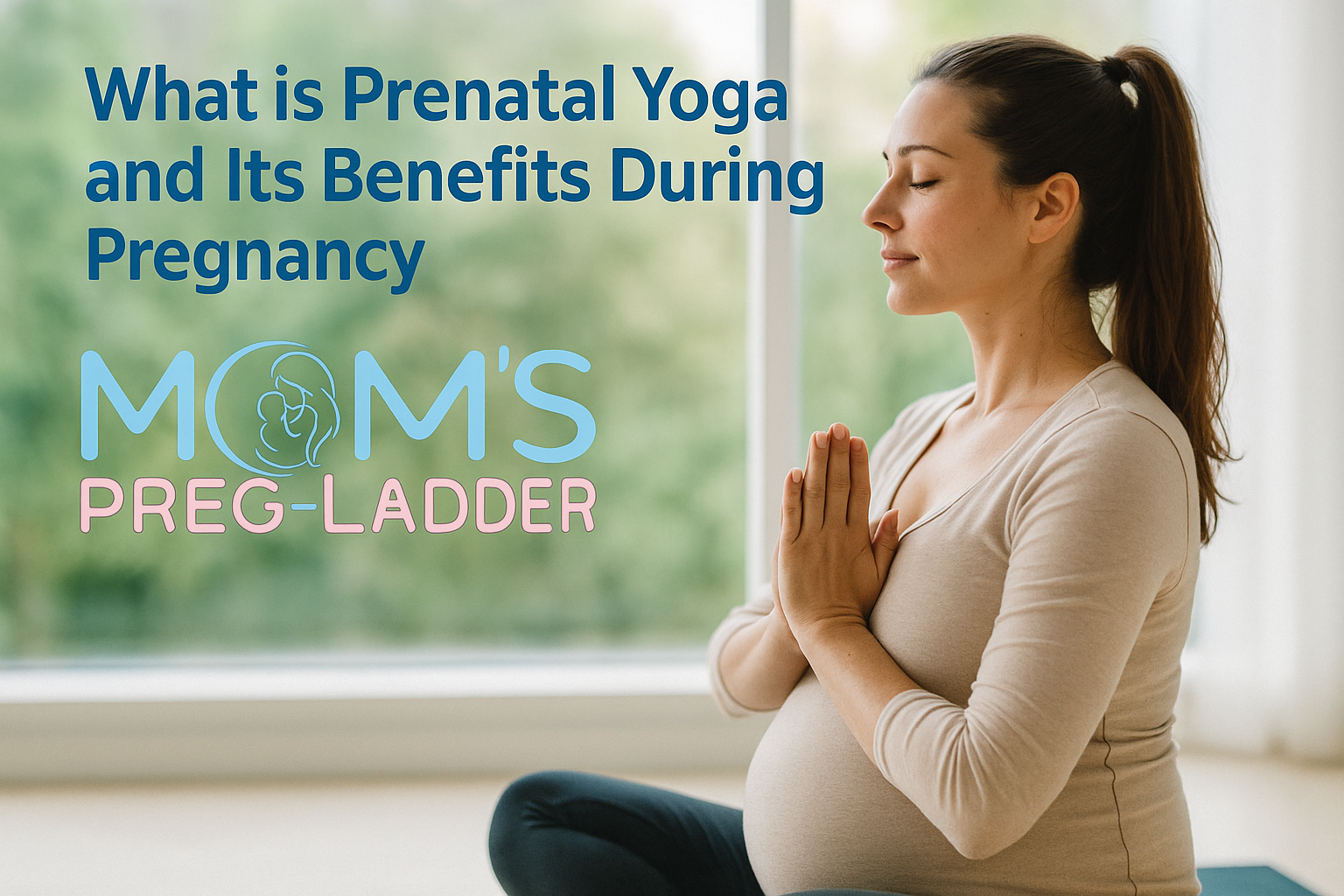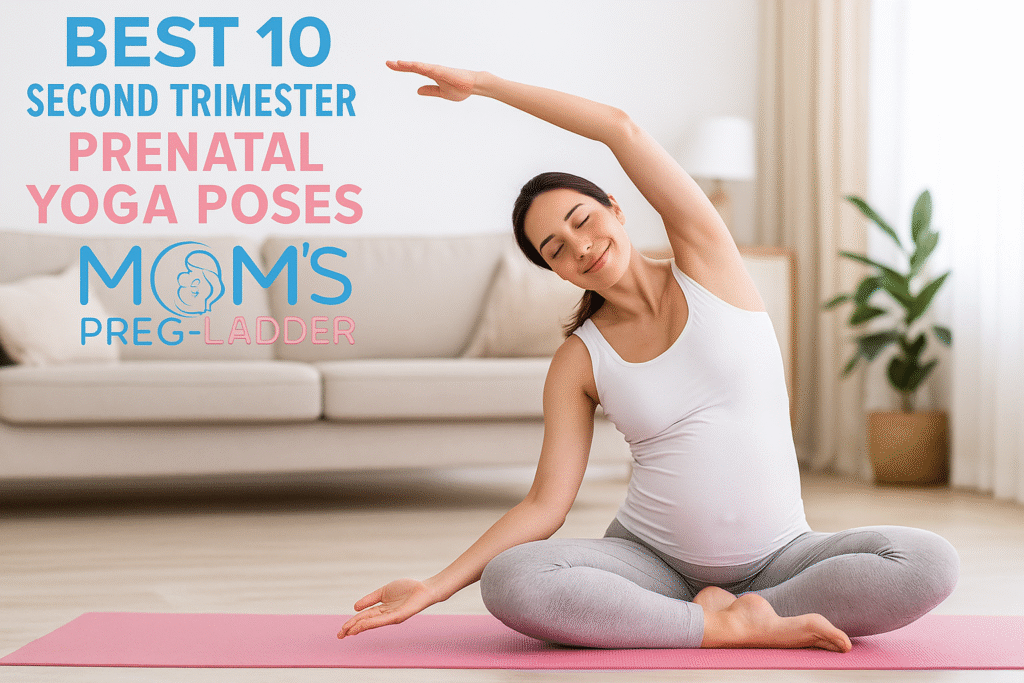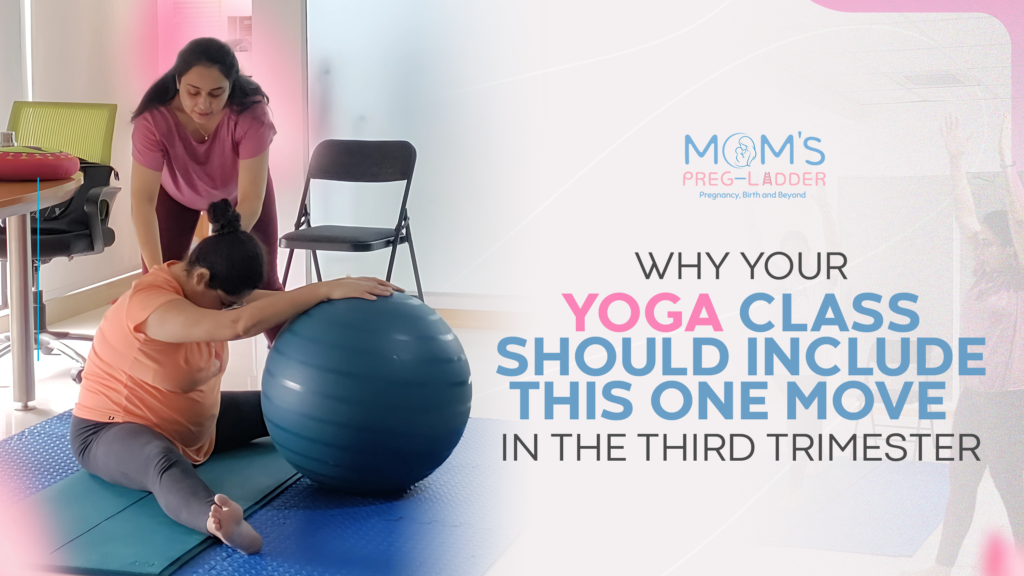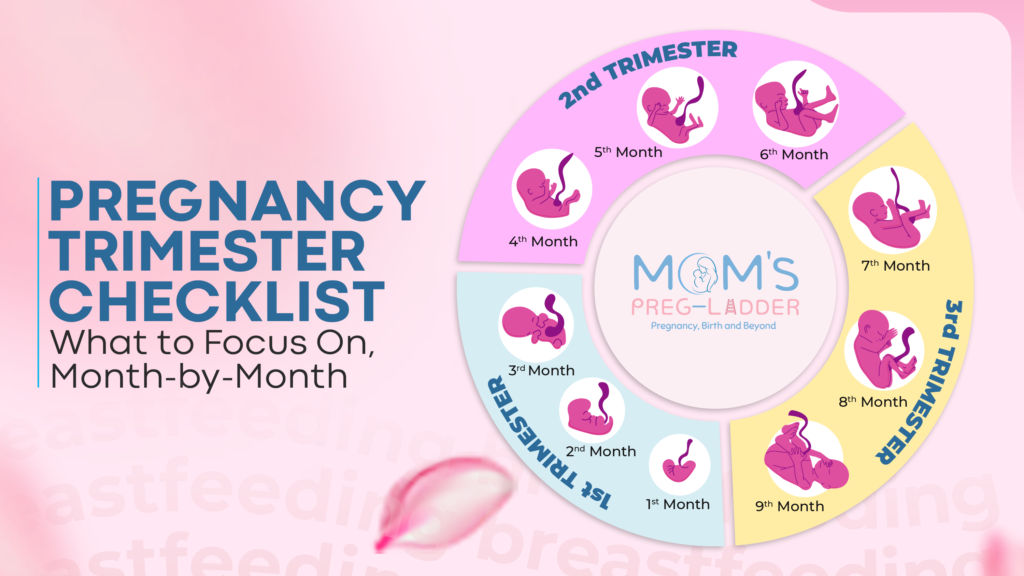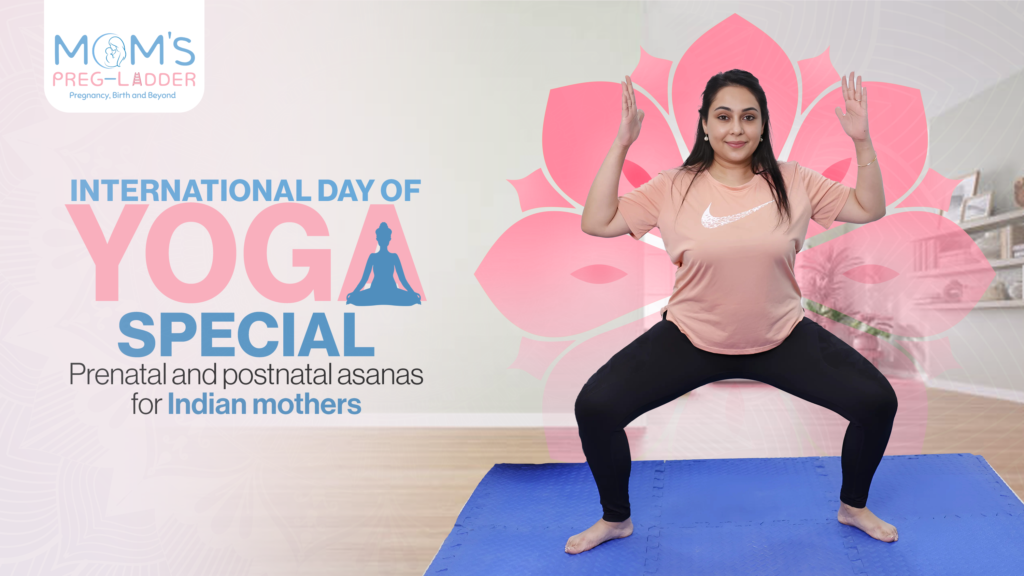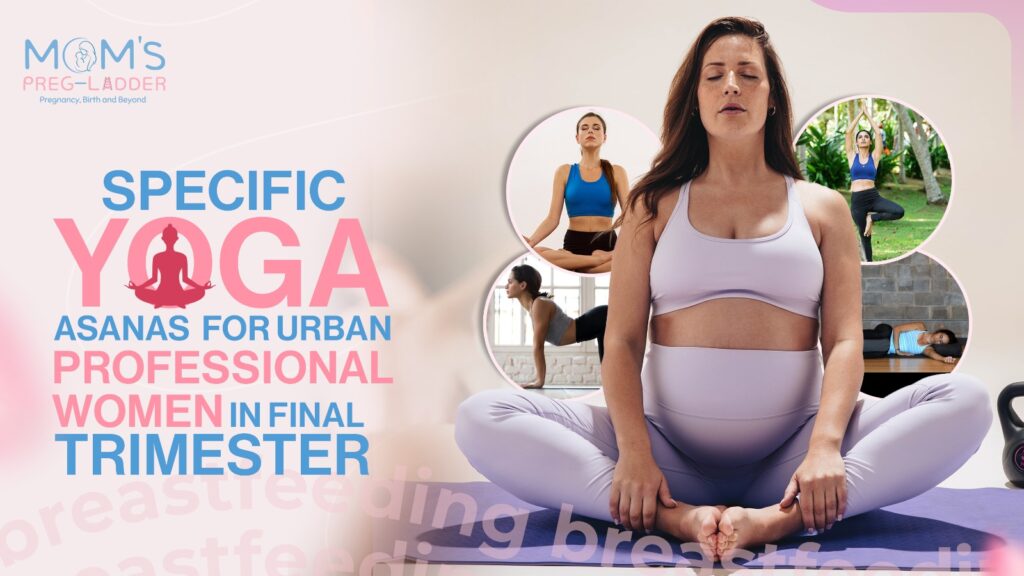Introduction
Pregnancy is one of the most exciting, wonderful, challenging, and life-changing phases of life. The time when you are carrying a new life inside of you and your body is evolving in unbelievable ways is a sacred period for a woman. You are in a state of great change; changes in your body, mind, and emotions. To take care of the miraculous changes taking place during this phase, prenatal yoga is one of the best and most holistic practices for you as an expecting mother.
Prenatal yoga is a form of gentle asanas, pranayama, meditation, and self-care practice that is specialized and designed for the expecting mother. It helps you to strengthen your body, calm down your racing thoughts, connect with your baby, and be a healthy and happy mother. This ultimate guide to prenatal yoga will tell you what prenatal yoga is, its benefits, what to avoid during prenatal yoga, and how Moms Preg Ladder mothers can guide you through your entire pregnancy journey with safe practices backed by experts.
What Is Prenatal Yoga?
Prenatal yoga is a form of yoga practice that is specially tailored for pregnant women to meet their changing needs throughout the stages of pregnancy. It involves gentle stretching, breathing exercises, relaxation, and mindfulness.
Unlike traditional yoga, prenatal yoga is tailored to meet the needs of a changing body. It focuses on poses that:
- Strengthen the pelvic floor and lower back
- Improve balance and flexibility
- Promote better posture
- Reduce stress and anxiety
- Prepare the body for labor and childbirth
The primary goal of prenatal yoga is not perfection of poses but comfort, relaxation, and connection — between the mother, her body, and the growing life within.
The Philosophy Behind Prenatal Yoga
The philosophy of prenatal yoga is deeply embedded in the idea of balance and mindfulness. When a woman is pregnant, her body is in a state of creation. Yoga encourages practitioners to be mindful of their bodies, to listen to them, to respect them, and to understand their strengths.
In each prenatal yoga practice, we remind pregnant women to slow down, breathe, and be present. This helps them to deal with the aches and pains of pregnancy, as well as create a calm, clear mind and steady emotions.
The Physical Benefits of Prenatal Yoga
Pregnancy can bring discomforts like back pain, swelling, and fatigue. Regular prenatal yoga practice can significantly reduce these symptoms while improving overall well-being. Here are the key physical benefits:
1. Improves Strength and Flexibility
Prenatal yoga strengthens the muscles most used during pregnancy and childbirth, including:
- Pelvic floor muscles
- Lower back
- Hips
- Thighs
- Abdomen
These muscles play a vital role in supporting your growing belly and in preparing for labor.
2. Enhances Posture and Balance
As your belly grows, your center of gravity shifts, often leading to posture problems. Prenatal yoga helps maintain balance and alignment, reducing strain on the lower back and spine.
3. Reduces Back Pain and Discomfort
Gentle stretching and strengthening exercises relieve pressure on the spine and pelvis, minimizing common pregnancy-related aches such as sciatica or lower back pain.
4. Promotes Better Circulation
Yoga postures help improve blood flow throughout the body, reducing swelling in the legs and ankles while ensuring your baby receives a healthy oxygen supply.
5. Aids in Better Sleep
Many pregnant women struggle with insomnia or disrupted sleep. Prenatal yoga promotes relaxation, helping you unwind and sleep more peacefully.
The Emotional and Mental Benefits of Prenatal Yoga
Beyond the physical aspects, prenatal yoga nurtures emotional well-being — an often-overlooked component of a healthy pregnancy.
1. Reduces Stress and Anxiety
Through deep breathing and mindfulness, prenatal yoga lowers cortisol levels and promotes a sense of calm. Regular practice can help you manage mood swings and reduce prenatal stress.
2. Builds Connection with the Baby
During yoga, mothers are encouraged to focus inward, becoming more aware of their baby’s movements and heartbeat. This strengthens the emotional bond between mother and child.
3. Enhances Mindfulness
Prenatal yoga teaches mindfulness, the ability to stay present and positive. This awareness helps mothers approach pregnancy and childbirth with confidence and grace.
4. Prepares the Mind for Labor
Breathing techniques learned in yoga, such as ujjayi (ocean breath) and deep diaphragmatic breathing, help mothers stay calm and focused during contractions and labor.
Safe Prenatal Yoga Poses for Each Trimester
Every stage of pregnancy has its unique challenges and needs. Here’s a trimester-by-trimester breakdown of safe and effective prenatal yoga poses.
First Trimester (Weeks 1–12)
Focus on gentle movement and breathing.
- Cat-Cow Stretch
- Seated Forward Bend (mild version)
- Mountain Pose
- Butterfly Pose
Second Trimester (Weeks 13–27)
Enhance strength, flexibility, and circulation.
- Warrior II Pose
- Supported Goddess Pose
- Side Stretch
- Seated Spinal Twist (gentle)
Third Trimester (Weeks 28–40)
Prepare for labor and relaxation.
- Child’s Pose (wide knees)
- Squat Pose (with support)
- Pelvic Tilts
- Deep Breathing and Meditation
⚠️ Always practice under expert supervision and listen to your body. Avoid poses that involve lying flat on your back or deep twisting.
Important Precautions Before Practicing Prenatal Yoga
While prenatal yoga is safe and beneficial for most women, it’s important to follow a few precautions:
- Consult your doctor before starting yoga, especially if you have a high-risk pregnancy.
- Avoid deep backbends or strong abdominal contractions.
- Stay hydrated throughout your session.
- Avoid overheating or overexertion.
- Listen to your body, stop immediately if you feel dizzy or uncomfortable.
The Science Behind Prenatal Yoga: What Research Says
Several studies have highlighted the positive effects of prenatal yoga on maternal and fetal health.
- A 2015 study in the Journal of Obstetrics and Gynaecology Research found that prenatal yoga significantly reduces anxiety and improves birth outcomes.
- According to research by the Harvard Health Publishing, regular yoga practice during pregnancy can lower the risk of preterm labor and improve overall maternal well-being.
- Yoga also supports healthy weight management, improves fetal growth, and promotes shorter, less painful labor.
These scientific validations have made prenatal yoga one of the most recommended wellness practices by doctors, midwives, and maternity experts.
Breathing Techniques and Meditation in Prenatal Yoga
Breathing, or pranayama, plays a central role in prenatal yoga. Deep breathing promotes oxygen flow, reduces stress, and prepares mothers for labor.
Common Breathing Practices:
- Deep Belly Breathing: Promotes relaxation and oxygen flow.
- Ujjayi Breath: Helps regulate emotions and remain calm during contractions.
- Alternate Nostril Breathing: Balances energy and relieves tension.
Meditation complements breathing by calming the mind and improving focus. Many prenatal yoga sessions end with guided meditation, allowing mothers to connect emotionally with their baby.
The Role of Prenatal Yoga in Labor Preparation
Prenatal yoga is often called “the rehearsal for labor.”
Here’s how it helps prepare you for the big day:
- Strengthens the body for endurance during childbirth
- Improves flexibility for easier positioning during labor
- Trains the mind to stay calm under pressure
- Teaches rhythmic breathing for pain management
- Encourages relaxation between contractions
Women who practice yoga regularly during pregnancy often report shorter labor durations and reduced need for pain medication.
How Prenatal Yoga Helps Postpartum Recovery
The benefits of prenatal yoga extend even after childbirth. Postpartum recovery becomes smoother as the body and mind have been conditioned through yoga.
Postnatal Benefits Include:
- Faster muscle recovery
- Reduced postpartum depression
- Improved energy levels
- Enhanced bonding with the newborn
- Easier transition to postnatal yoga or light workouts
Practicing yoga throughout pregnancy sets a foundation for long-term health and balance.
Read More – Top 10 Clinics Offering Preconception Classes Across India
How Moms Preg Ladder Helps You Through the Journey
Pregnancy is a beautiful journey like no other, with its share of joys, hardships, and many, many questions. Moms Preg Ladder is here to be your guide and companion.
Moms Preg Ladder is here to assist mothers-to-be with expert tips, advice, and research-backed information on prenatal care, pregnancy yoga, and holistic wellness. Their team recognizes that every pregnancy is unique and is dedicated to empowering mothers with safe, nurturing, and personalized support.
How Moms Preg Ladder Supports You:
- Guidance on safe prenatal yoga routines
- Breathing and relaxation techniques for every trimester
- Emotional wellness tips to manage mood and anxiety
- Nutrition and self-care insights
- Postpartum recovery guidance
The mission of the platform is mindful motherhood – guiding women to experience pregnancy with confidence, awareness, and tranquility. Moms Preg Ladder integrates modern medical information with holistic approaches to ensure mothers have access to reliable and research-based support.
Tips for Practicing Prenatal Yoga Safely at Home
If you prefer to practice at home, follow these safety guidelines to ensure a comfortable experience:
- Choose a quiet, well-ventilated space.
- Use supportive props like cushions, bolsters, or yoga blocks.
- Practice gentle movements; avoid over-stretching.
- Focus on slow, deep breathing.
- Always end your session with relaxation or meditation.
Common Myths About Prenatal Yoga — Debunked!
Let’s clear up some common misconceptions:
| Myth | Reality |
| Prenatal yoga is unsafe in early pregnancy. | When done under guidance, it’s safe and beneficial from the first trimester. |
| Yoga can trigger early labor. | Gentle, guided yoga actually reduces the risk of complications. |
| You must be flexible to do yoga. | Prenatal yoga is about comfort, not flexibility. |
| It’s only physical exercise. | It’s a complete mind-body practice for emotional and physical balance. |
Understanding these truths can help mothers approach prenatal yoga with confidence and peace of mind.
Why Prenatal Yoga Is More Than Just Exercise
Prenatal yoga is more than just physical exercise; it’s a practice of self-exploration and connection. It allows mothers to embrace their changing bodies, be present with their emotions, and prepare themselves spiritually for the journey of motherhood. Through conscious movement and breathwork, yoga becomes a way to honor the miracle of life one breath, one pose, and one heartbeat at a time.
Final Thoughts
Prenatal yoga is a gentle, effective and transformative practice that supports both mother and baby. From toning your body to calming your mind and preparing for childbirth, it promotes balance at every stage of pregnancy.
With the right guidance from reliable platforms like Moms Preg Ladder, you can enjoy a safe and rewarding prenatal yoga experience. Remember, each pregnancy is unique, listen to your body, respect your limits, and let yoga empower you to a calmer, more confident motherhood.
Frequently Asked Questions
1. Is prenatal yoga safe for all trimesters?
Yes, prenatal yoga is safe throughout pregnancy when practiced under guidance. Modifications are made for each trimester to suit your body’s changing needs.
2. How often should I practice prenatal yoga?
Most experts recommend practicing 3–5 times a week for 30–45 minutes. Consistency is more important than duration.
3. Can prenatal yoga help during labor?
Absolutely. The breathing techniques and flexibility gained from yoga help manage contractions and promote smoother labor.
4. What should I avoid during prenatal yoga?
Avoid deep twists, backbends, or poses lying flat on your back after the first trimester. Always move within your comfort zone.
5. Can I do prenatal yoga at home?
Yes, but beginners should start with professional guidance or follow reliable sources like Mrs. Swapnil Kaushik, she provides trimester-specific advice and safe routines.
6. How soon after delivery can I restart yoga?
Most women can resume light yoga 4–6 weeks postpartum, depending on their recovery and doctor’s approval.

